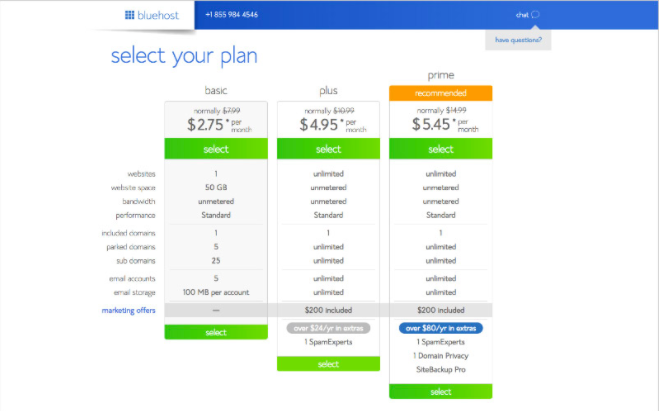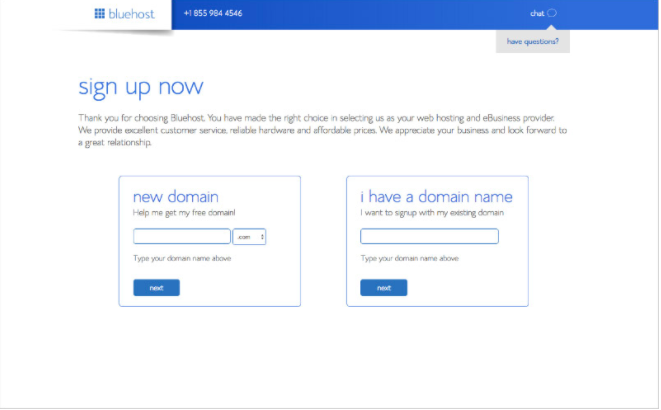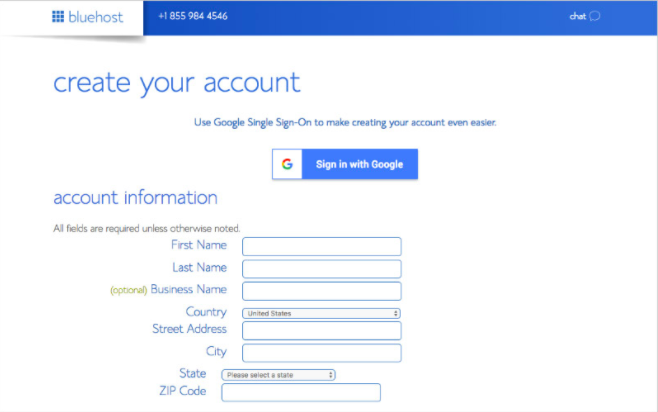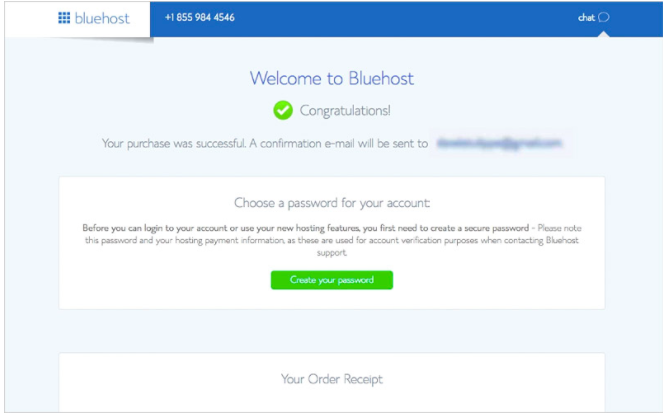Blogging is now a full-time career and thousands of bloggers around the world, including me, are making a lot of money.
In this article, I am going to explain how you can easily create a blog for almost free and make some good money like me.
The great thing about running a blog is that you not only make good money with it, but do many other things as well.
I am one of the top bloggers in India. I started my blogging career in 2014.
I personally started blogging for two good reasons.
- I wanted to help people and
- Of course to make some money with it.
Some other solid reasons for starting a blog are –
- Blogging makes you a better writer and thinker.
- You meet thousands of new people and followers through comments, social media or email.
- You can become a source of help and inspiration to others through your blog.
- You can promote your own business or services through blogging.
- You become popular and more confident.
Whatever the reason, the point is that a blog can be a very powerful tool for achieving various goals.
When you get a lot of benefits and you can create a blog with very little investment, why not create a new blog and earn good money from today.
You can not ignore it.
Take my example, I started blogging in 2014. I had not been able to do much for almost 2 years but I learned a lot about blogging.
For the next few years, I focused single-mindedly on this blog and in just a span of 3 years I was able to make over 1 million.
And now I want to help other people who want to learn blogs.
Free blog vs self-hosted paid blog
There are 2 ways to create a blog – one is free and the other is to pay around $ 100 (Rs. 7000) for the domain name and hosting.
You can start a free blog with Blogger.com, Wix.com, WordPress.com, etc., but there are several limitations to creating a free blog with any of them.
To make things clear, I am giving you 6 such reasons why you should not start a free blog.
- Your blog’s domain name will look like YourBlogName.blogspot.com or YourBlogName.wix.com, which is too long to read compared to a paid blog that reads YourBlogName.com.
- You will face severe limitations involving many design changes.
- Demonetization will make it difficult to adversely affect your revenue.
- The entire process of transferring from free platform to payment is very tedious and you may lose some of the traffic and revenue.
- Your readers, advertisers, and customers will not take you seriously.
- In the end, you are not in control of your content because everything is in the hands of the free platform you are using. If anything goes wrong with your blog, they will suspend your blog and you cannot do anything.
I hope the above 6 reasons are enough to convince you to create a free blog.
And if you want to buy a self-hosted blog with any web hosting company, you have to pay $ 100 or more.
But today, I’ll show you how to get a full-featured self-hosted blog for under $ 60. You will also get a free domain and free SSL certificate with this domain.
How to start your first blog
Now you can start a blog by getting a domain name for hosting for only $ 60 (Rs. 4000 / – in India).
Here is the step by step process to get your first blog up and running.
Step 1: Choosing the right CMS
The CMS or Content Management System is basically a blogging platform such as Blogspot, WordPress, Drupal, Joomla, Wix, TypePad, etc. where you are going to insert all your files.
Out of so many blogging platforms available below, we are going to go with WordPress for the following great reasons.
- It’s free.
- It is very easy to design a blog and understand its dashboard.
- WordPress gives you so much freedom to design any kind of website with the help of its 5000+ free and paid themes.
- Currently, over 70,000 free plugins have been offered by WordPress to make your blog run faster and efficiently.
- Finally, there is a whole WordPress community out there that can help you with anything when setting up a blog. Join their WordPress forum.
98% of the blogs in the world are currently using WordPress. Even I use WordPress for all my blogs including this blog super310.
Therefore I highly recommend you to create your blog with WordPress CMS.
Step 2: Select an appropriate domain name
Step 2 is very important because a domain name refers to the location of your blog. So you have to do justice to your blog by choosing the right domain name.
My blog super310.in is all about super ideas and careers as the name suggests. I chose the name keeping in mind my niche and audience. So you have to do the same thing.
If you are planning to start a blog on football or cricket, choose a name like cricketingworld.in or soccerfan.com.
If you love dogs and cats then go for things like CatsnDogs.com or PetsWorld.com etc.
I think you got the idea!
The following are some things that you have to keep in mind.
- The domain name should correspond to the purpose of your blog.
- The name should be easy to remember and pronounce.
- Try the .com extension. You can target worldwide with .com. If you can’t find .com with the domain you want, feel free to go with other extensions like .in, .org, .net, .info, .com, etc.
- Ignore numbers and dashes in a domain.
Finalize on one of the most appropriate domain names.
Step 3: Selecting the best hosting provider
1: WHAT IS WEB HOSTING?
Web hosting is where your blog will live. It is a company that provides the necessary services to view your blog online. For example, when a user views your blog by entering your website address (domain name), their computer will connect to a server (which is where your blog will be hosted) so that your web pages can be viewed through the browser.
2: WHAT IS FIRST: WEB HOSTING OR BLOGGING PLATFORM?
Well, you need hosting to be able to access your platform. So in that sense, accommodation comes first.
If you choose to go for a paid service like Bluehost or HostGator, you will have access to various blogging platforms like WordPress, Joomla, Drupal, Ghost. You can access the platforms through your Cpanel (control panel), and setup is as simple as clicking the install button for the platform of your choice.
If you go for a free service like Blogger, Wix, and Tumblr, you will have to use your own design, which is usually very limited in functionality.
3: SOME MORE THINGS TO KNOW ABOUT FREE BLOGGING PLATFORMS
Before you think that I am completely against free blogging platforms, let me tell you that I am not. I think they are excellent as long as their goal is not to create a brand and make money from it.
Now one important thing to know about free blogging platforms is that they only provide subdomain names. This is bad for many reasons:
- Your site may not be taken seriously. Just look at my old free URL -> www.super310.blogspot.com compared to the one I currently have -> super310.in (custom domain name). One looks like a hobby blog, while the other looks professional. Owning a domain name is crucial for proper branding.
- It is not compatible with search engines. Google does not consider free blogs to be authorities. This is why you rarely see them appear in the top 5 search results. This means less traffic, fewer eyes on your content, and less money in the long run.
- They are bad for the credibility of social networks. Since free platforms are invaded by spammers, your URL could end up looking questionable in the eyes of the social media community. This means fewer shares and the possibility of earning a bad reputation.
Another thing to keep in mind is that you do not control your blog on a free platform. The company controls 100% of your blog.
That’s pretty scary considering all the effort and time invested in creating your blog content. For many of us, blogging is not just a way to earn a living. It is also an exciting project that took months and years to build.
The prospect of something so precious being taken from me at any moment, forever, gives me the creeps. Just think … if Tumblr decided to close its doors tomorrow and all the content you created might just disappear like that. Brrr!
Blogging for free also means that the company reserves the right to read, access and ban your content if it believes it is violating certain rules or regulations, for the safety of its users and the public.
Step 4: Set up blog hosting
Once you’ve decided on a domain name, you’ll need to set up hosting for your blog. While WordPress itself is free (see step 2 below), you need a reliable place to host your WordPress blog (your blog must be on a server somewhere on the internet).
For hosting, we recommend Bluehost for several reasons:
- We use Bluehost. We personally use Bluehost to host The Minimalists. If you recommend a company, you better be willing to use their product yourself. We also use them to host various other websites of ours.
- Excellent client service. Bluehost’s customer service is 100% US-based. With wait times averaging less than 30 seconds and 100% in-house staff on site at their Texas offices, you can rest assured that the person helping with your site knows how to help. In other words, if you have any questions, they will help you through the entire setup process.
- Good price. TheMinimalists.com is an affiliate partner of Bluehost, which means that in addition to using their service, we also receive a commission for referring new customers. However, to be fair, we would continue to use Bluehost even if we were not affiliated; we have used them for a long time. Ergo, we don’t recommend Bluehost just because we are an affiliate (all hosting companies offer a similar affiliate program); We recommend Bluehost because it is the best and most reliable option. Also, as we are partners, Bluehost offers a 50% discount for The Minimalists readers – just $ 2.75 per month for the first year.
- Free domain. When you sign up for hosting, Bluehost will give you a free domain name, allowing you to avoid the initial and recurring fees associated with purchasing a domain on your own. If you’ve already bought your own domain name, don’t worry; you can still use your domain with Bluehost (it’s just an extra step).
- Money back guarantee. Bluehost offers a 30-day money-back guarantee, so there’s no risk if you change your mind.
- Reliability. Bluehost’s facilities are world class. They have their own 20,000 square foot custom data center with enough backup generators to power a city.
- Family friends. Many of our friends and family also use Bluehost to host their blogs.
Now that you are ready to get started, go to Bluehost and click the Start Now button.
Next, choose your hosting plan.
You will see prices range from $ 3 to $ 6 per month depending on whether you want a basic single blog hosting plan or a more robust plan that allows you to create multiple blogs.
Note: Because we are an affiliate partner, Bluehost offers a special price for The Minimalists readers: just $ 2.75 per month for the first year. That is a significant discount.
Once you select your plan, you will choose or enter your domain name.
If you don’t have a domain name, just enter your desired blog name in the New domain box.
If you already have a domain name, enter it in the I have a domain name box.
Click Next.
Finally create your blog account.
And click Create your password to complete your blog hosting setup.
Just like that you’ve nearly become a blogger!
How to blog: 20 blogging tips to improve your writing...
We get a lot of emails asking how to blog, about blogging topics, and how to create meaningful content. Most of this essay explains how to start a blog, but that’s just the initial step. Now is the time to start writing and publishing your content.
Here are 20 tips on how to blog.
- Find your niche. You don’t need to have a niche, but it helps. When learning to be a blogger, it is important to ask yourself what it is that you are passionate about. Running? Cooking? Be dad? Have you found your passion? If so, whatever it is, write about it. If not, you must first find your passion.
- Note: We generally recommend that people don’t start a blog about minimalism or keto or any other very saturated topic. But what we really mean when we say this is: don’t blog about something unless you have a unique perspective. If you have embraced a simple life and have a unique perspective, then go for it.
- Define your ideal readers. Once you’ve found your niche, you need to know who will read your blog. For example, we blog about living a meaningful life with less. Therefore, our ideal readers are people interested in exploring minimalism in order to clear the way to more meaningful lives.
- If you want to write about the growth of your newborn baby, that’s wonderful – your ideal readers are probably your friends and family. If you want to write about classic car restoration, that’s great too. Tailor your writing to your readers (be it your family or local community or anyone else who reads your blog).
- Add value. Your blog must add value to the lives of your readers. You want to help people solve problems. This is the only way to get high-quality readers to your site (and keep them coming back).
- Adding value is the only way to gain long-term acceptance from someone. We both learned this after a decade of leading and managing people in the corporate world. With everything you write, it’s worth asking yourself: Is this value added?
- Be original. Yes, there are other blogs on the same topic that you want to write about. Question: So why is your blog different? Answer: Thank you. You are what makes your blog different. It’s about your perspective, your creativity, the value you add.
- To be interesting. Write interesting blog posts. Especially if you want people to share it with others.
- Be yourself. Part of being interesting is telling your story. Each person is unique and your story is important. The important part of the storytelling, however, is removing the superfluous details that make the story uninteresting. A great storyteller removes 99% of what really happens (the absorbing details) and leaves the interesting 1% for the reader.
- Be honest. Your blog must be authentic, it must feel real, if you want people to read it. You can be your blog or your blog can be you. I mean, do you really embody the things you write about? If not, people will see it.
- “Be the change you want to see in the world” is the famous Gandhi quote. Perhaps bloggers should create the blog they want to write for the world.
- Transparency. Being transparent is different from being honest. You don’t have to share every detail of your life just for the sake of being honest.
- Always be honest and transparent when adding value to what you are writing. (Because everything we write must serve the common good, you will never see photos of us using the bathroom – that just isn’t relevant.)
- Time. Once you have learned how to start a blog, you will learn that blogging takes a long time, especially if you are as neurotic as we are.
- With that said, once you’ve got your layout set up, don’t tweak it too much. Instead, spend time writing.
- Vision. The reason our site design looks good is because we have a great host, we have a great theme, and most importantly, we had a vision of how we wanted our blog to look.
- Find your voice. Over time, good writers discover their voice and their writing tends to develop a certain flow, which is attractive to their readers. Finding your voice makes your writing feel more alive, more real, more urgent. To read more, check out our blog post on Finding Your Voice.
- Us instead of you Use the first person plural when possible. Our statements and ours are more powerful than yours and yours, especially when it comes to negative behaviors or tendencies. The first person is much less accusatory. Think of it this way: we are writing peer-to-peer, we are not gods.
- When to post. Question: When is the best day and time to publish a blog post? Answer: It doesn’t really matter. We don’t stick to a particular schedule, but we do post at least once a week because consistency is important. However, you don’t need to get bogged down in the details.
- Social networks. Yes, we recommend using Twitter, Facebook, and Instagram to help connect with your audience and other bloggers, but don’t get too caught up in that. Focus on writing first, social media second.
- Ignore negative criticism and stupidity. Sure, we get a lot of negative comments and stupid questions from ignorant people who are not really our readers (“You are not really minimalists!”).
- We call these people seagulls: they fly, they shit in place and they fly away. But we ignore them, because we did not start our blog for them. Delete their comment and move on.
- Investigation. Take time to research what you are writing about. The reason we can use so many useful and relevant links in our essays is because we spend time researching our topics.
- Keep it simple. This is where minimalism can be applied to start any blog, regardless of gender. No need to place superfluous ads or widgets all over your site. Stick to the basics and remove anything you don’t need, remove anything that doesn’t add value.
- Image. Put a photo of yourself on your blog. People like to see the face of the person who writes the blog. If two dumb guys from Dayton, Ohio aren’t too scared to put their photos on their site, then you have nothing to worry about.
- Comments. If you’re going to have comments on your site, read Scott Stratten’s Five Words That End His Blog.
- Live your life. You’re starting a blog about your life (or about certain aspects of your life, at least), so you still need to live your life. There are things that we always put before blogs: exercise, health, relationships, experiences, personal growth, contribution. Simply put, live a life worth writing about.










